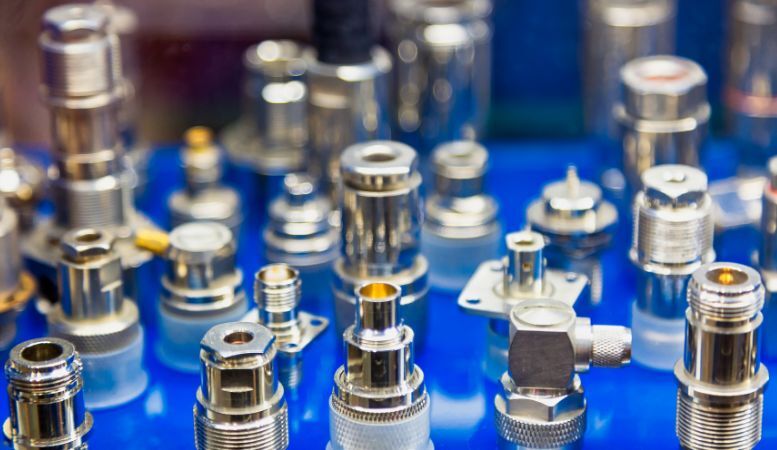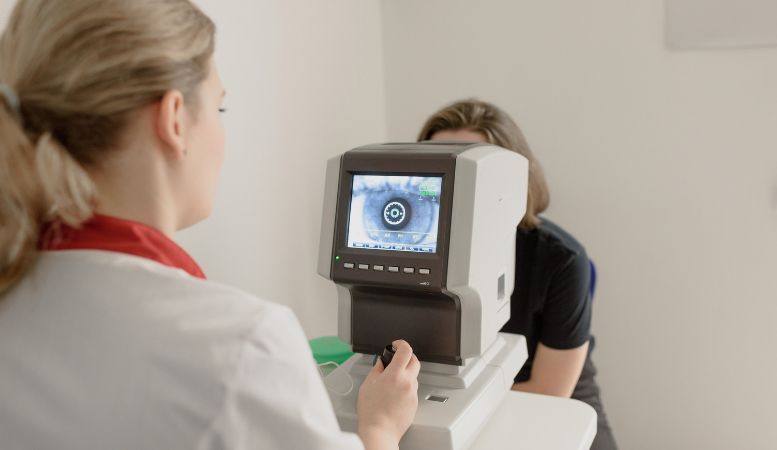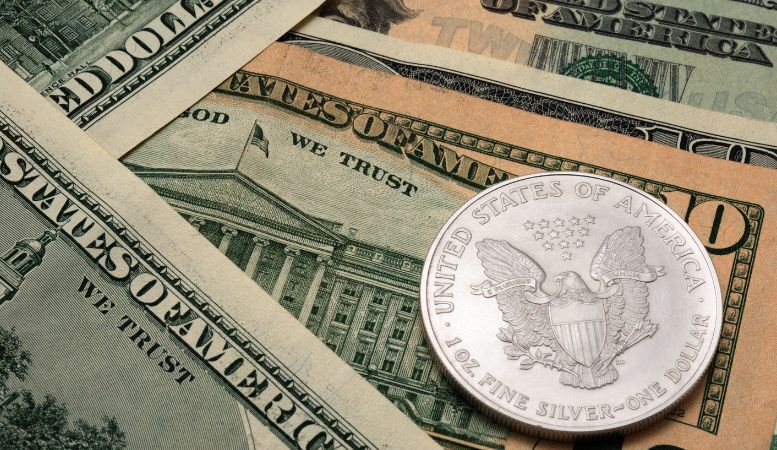Table of Contents
Silver has many uses across multiple industries. But how has silver been used historically, and have we changed the ways we use it in our daily lives? Are there particular benefits to using silver in a precious metals investing portfolio, or is it just another option?
Investing in silver has historically been a wise choice for many investors. Silver’s economic impact has helped many investors resist inflation and retain more of their investments through economic downturns. But what is the story of this precious metal through the ages, and what are the uses of silver today?
Historical Significance of Silver
Silver was historically used in everything from jewelry making to currency, medicine, dishes and cups, and more. Early humans learned to extract silver from ore and other elements as early as 5,000 B.C. Silver has been a high-value commodity in several industries since we discovered it and learned to form it into useful tools and decorative ornamentation.
How Was Silver Used in Ancient Civilizations?
Ancient civilizations used silver in a wide range of applications. One of the most popular uses was in jewelry, with which humans have adorned their bodies for millennia. Additionally, despite not recognizing the natural antimicrobial properties of silver, ancient and classical humans used silver flasks, plates, cups, and other vessels to extend the shelf life of wine, ale, bread, and other foods.
Ancient Mediterranean and Asiatic peoples used silver foil on wounds to prevent infection, and the Romans listed silver in their official medicinal guides. Over time, silver jewelry became more complex as cultures advanced in their ability to mold the metal into different shapes.
Role of Silver in Trade and Currency
The earliest recorded people to use silver as currency were the Sumerians in Mesopotamia around 3,100 B.C. All of humanity operated on the silver standard for millennia, only occasionally using gold for high-value transactions or international trade.
Silver in Modern Industrial Applications

Since ancient times, silver has been a staple of the economy, art, jewelry, medicine, and industry. But what are the modern industrial applications of silver?
How Is Silver Utilized in Electronics and Technology?
Silver plating is common in the electronics and technology industries. Silver naturally resists corrosion and readily bonds to conductive and nonconductive metals like steel, copper, bronze, stainless steel, and metal alloys.
Silver is malleable, conductive, and solderable and offers multiple benefits for the aerospace industry, including a high degree of lubricity in temperatures up to 1200°F.
What Is the Role of Silver in Photography and Mirrors?
Mirrors historically applied silver to the back of a pane of glass to reflect light toward the viewer. While modern household mirrors may use other metal coatings such as nickel, tin, aluminum, or chromium, mirrors in optics still use silver. You can still find mirrors in telescopes, microscopes, and other technical and scientific applications.
Medical Uses of Silver

Silver has been used for centuries in medical applications to treat and prevent infections in wound care. It is effective against bacteria, fungi, and amoeba and is common in wound dressings, X-ray imaging, and materials for catheters and endotracheal tubes.
What Are the Antibacterial Properties of Silver?
Silver is biologically active in the form of silver nitrate, which uses positively charged silver ions that living organisms like bacteria will absorb. Silver kills the bacteria, which then leaches the silver out into the surrounding environment for other bacteria to absorb, continuing the cycle.
How Is Silver Utilized in Wound Dressings and Medical Devices?
Modern wound dressings may contain silver to prevent or treat microbial infections and reduce instances of scar tissue development. It is also common in dental procedures and treatments, especially when creating amalgam fillings for cavities.
Silver was once commonly used in X-rays before digital X-rays became the norm. Developing countries around the world still use silver in X-rays as they make the switch to digital in high-end hospitals and universities.
Why Is Silver Significant in Jewelry Making?

Since the discovery of silver extraction, silver has been essential in making jewelry, accessories, and decorative ornamentation for people, pets, homes, and other places where people gather.
What Are the Cultural and Traditional Uses of Silver Ornaments?
Silver has been used to decorate bodies, homes, and tombs and as currency in every culture since Mesopotamia. Ancient Egypt, China, and all of ancient Europe traded silver for silk, salt, gems, labor, agriculture, and other goods and services.
Silver has historically been much more available for extraction and processing into jewelry than other malleable metals like gold, lending to the more common use of silver for everything from currency to dishes, cups, statues, paint, and a wide variety of jewelry styles.
How Is Silver Used in Aerospace and Technology?
Silver is highly conductive, malleable, and solderable, and it bonds well with other metals. This makes it an excellent option for aerospace and technology applications when manufacturing components essential for electronic communications, circuitry, and friction resistance in moving parts such as turbine engines.
The prevalence of silver in aerospace has extended to green energy technologies, which use turbine engines in wind farms and solar panel technology improvements developed for satellites to generate energy without fossil fuels.
Development and Operation of Spacecraft and Satellites
Spacecraft, satellites, rovers, and deep space probes utilize silver in a variety of ways for navigation, data storage, circuitry, communications, and other applications. The primary advantages of silver in these crafts include silver’s conductivity and heat resistance.
Silver plating is essential in reducing friction between moving parts, including engine parts and robotic controls, and exterior plating protects against atmospheric friction.
Silver in Food and Water Treatment

The World Health Organization (WHO) approves using silver in water treatment, including at local water treatment plants as well as in-home carbon filters. Silver’s antimicrobial properties make it an excellent regulator to limit bacterial growth in water filters to extend their useful life and make them more effective at removing contaminants from drinking water.
How Is Silver Used in Food Preservation?
Current clinical studies are considering the potential for silver nanoparticles in food packaging to reduce the likelihood of foodborne illness and improve the shelf life of many foods. However, concerns with how ingestion of silver may affect the human microbiome and could lead to a buildup of silver in some individuals make studying the potential for silver packaging ethically ambiguous.
If scientists were to develop silver food packaging that didn’t leach into the food product, silver could keep foods fresh for longer and preserve shelf-stable foods like crackers, cereal, and canned goods even longer.
How Does Silver Exhibit an Antibacterial Effect in Water Treatment?
Water treatment plants use silver to purify water by killing bacteria, algae, and other organisms that can survive other filtration processes. It is also used in pipe systems, pools, spas, and other potable and non-potable water systems to deter bacterial buildup and other contamination due to the presence of harmful microorganisms.
Homeowners may also use silver in-carbon filters built into their refrigerator water dispensers, pitcher filters, or whole-home filters. Many filter manufacturers add colloidal silver to prevent bacterial buildup in carbon materials.
Silver as an Investment and Currency Hedge

Throughout the history of human development, silver has held value. Whether as a currency, intrinsically, or in trade as a commodity, silver has been essential in art, science, culture, and medicine. Since 1915, the price of silver has increased by approximately 40%, adjusted for inflation. This makes investing in silver in the long term a well-calculated risk hedge against inflation and economic instability.
Investing in silver is a safer route to enter the precious metals investment market than some more volatile metals like gold, platinum, and palladium. This doesn’t mean silver isn’t volatile. In the short term, silver prices can fluctuate drastically, especially during periods of economic uncertainty. However, silver prices tend to remain more stable over long periods than other precious metals.
Silver is also more affordable than other metals for novice investors to enter the metal investing market. Gold, palladium, and platinum could see prices beginning at over $900 per ounce, with gold recently nearing $2,000 per ounce. By comparison, silver is extremely affordable as an entry-level metal investment, with prices currently around $24 per ounce.
Why Is Silver Considered a Precious Metal Investment?
Precious metals are conductive metals used to produce high-value goods, including jewelry, electronic components, photography, and advanced technology across several industries. Silver is the most available and affordable of the precious metals popular for investing.
How does silver factor into investing? Most silver production is a byproduct of other metals, including zinc, copper, and gold. Much of it is used across multiple industries or lost through different processes. Very little gets made into coins or bullion.
As a new silver investor, you can choose between several available silver products, including:
- Silver ETFs. Exchange-traded funds are liquid investments backed by the metals they represent. Investing in an ETF means you won’t have to keep metal on hand.
- Silver IRA. Save for retirement by funding an individual retirement account (IRA) with silver held in a certified depository managed by an IRA trustee.
- Silver coins, bullion, or bars. Know how much silver you have and its true value when you keep physical silver. You can keep silver at home, but contracting with a certified depository allows you to keep your investment insured against damage or theft.
There are other options like mutual funds, metal mining stocks, and futures and options. However, because these tend to be higher-risk investments, you would do well to avoid them until you feel comfortable investing in precious metals.
How Does Silver Act as a Hedge Against Inflation?
Inflation is a comparison of how much prices rise year over year. In July of 2022, inflation was at its highest at 4.9%, according to the New York Federal Reserve’s Underlying Inflation Gauge.
Because the purchasing power of the dollar fluctuates frequently and diminishes over time, you can hedge your investments against inflation with precious metal investments. Metals like gold and silver resist the influence of inflation over time, shielding your portfolio from losses due to inflation the way other investments can’t.
While precious metal prices are volatile in the short term, the metals will always have value. Long-term metal prices have increased over the last several decades when accounting for inflation, gradually accumulating value even as mines extract more gold and silver from the ground and add to the supply.
Having tangible investments in precious metals, particularly silver, can protect you from economic uncertainty. Because silver is the most affordable of the precious metals, it is usually easier to sell than gold or platinum if you need to liquidate part of your portfolio.
Environmental Impact and Recycling of Silver

Silver pollution can affect groundwater sources through leaching from areas with high levels of silver contamination, such as landfills. Silver winds up in landfills when we throw out broken jewelry, old photos, and damaged technology. Over time, silver particles work their way into the soil and enter runoff systems.
While traces of silver in drinking water and medicine are often not harmful, as we usually eliminate small amounts of silver in our bodies, the metal can accumulate in our systems over time. Too much silver could lead to a condition called argyria, which can turn the skin and other tissues in the body a bluish-gray. Extreme silver buildup can lead to seizures and other health complications.
Recycled silver has the potential to reduce silver pollution and greenhouse gas emissions from virgin silver mining. Mining silver also tends to have high costs in human labor, deforestation, habitat destruction of vulnerable species, and other operational offenses that are diminished by recycling silver.
Invest in Silver With the Oxford Gold Group
So, what is silver’s role in industry and investing? Silver has been crucial to human development since we first learned to extract it from the ground. Learn more about investing in silver with the Oxford Gold Group. Contact us today to get your precious metals investment guide.








